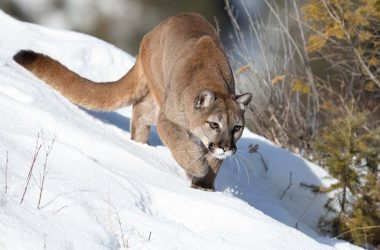A rainforest on Barro Colorado Island in Lake Gatun, Panama
Rick Carlson/Alamy
Annette Ostling from the University of Texas at Austin notes that tree-specific insect herbivores and fungal pathogens can easily spread between closely positioned trees of the same species. The transmission can occur through insects dropping from colonies onto nearby seedlings or through water splashes carrying fungal pathogens to neighboring trees.
To understand this phenomenon’s impact on tree distribution within tropical forests, Ostling and her team scrutinized data collected over 30 years from the Barro Colorado Island in the Panama Canal. Their focus was a 50-hectare plot previously mapped to record every tree’s location and the typical seed dispersion distance for each species.
Utilizing this data, Ostling’s team developed a computer model to predict the forest’s appearance based on where seeds were most likely to land and germinate. Their analysis revealed that trees of the same species were three times further apart in reality than the distances estimated by the computer model.
Ostling proposes that ‘enemy species’, potentially playing a significant role in maintaining forest diversity, are likely the reason for this dispersal pattern. Seeds landing near parent trees are prone to attacks from these enemy species, which could reduce their chances of growing into mature trees. This diversity among trees also aids in minimizing the spread of tree-specific pests.
Enemy species might also contribute to the diversity and tree spacing in non-tropical forests, albeit to a lesser extent, according to Ostling. She elaborates that the tropical forest climate is more beneficial for these enemy species; with no winters, insect populations can flourish all year, and the warm weather promotes the spread of fungal pathogens.
These findings support earlier research suggesting that tropical trees are more successful when spaced further apart from trees of the same species, adds Kyle Harms from Louisiana State University. Understanding these patterns in forest composition becomes increasingly vital as threats such as deforestation risk diminishing biodiversity in these unique habitats.












